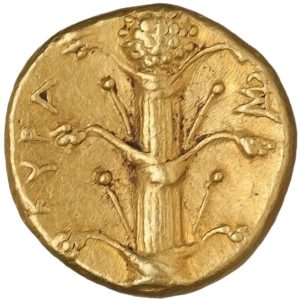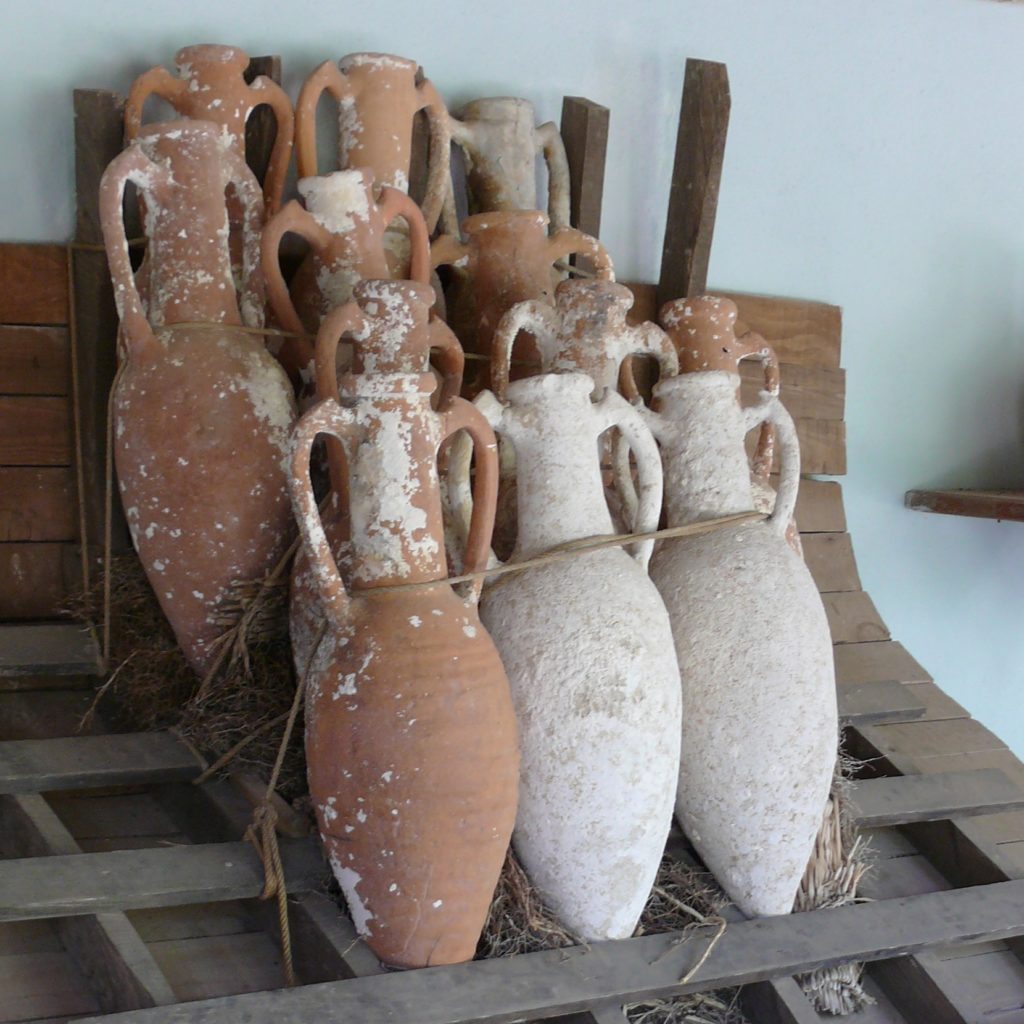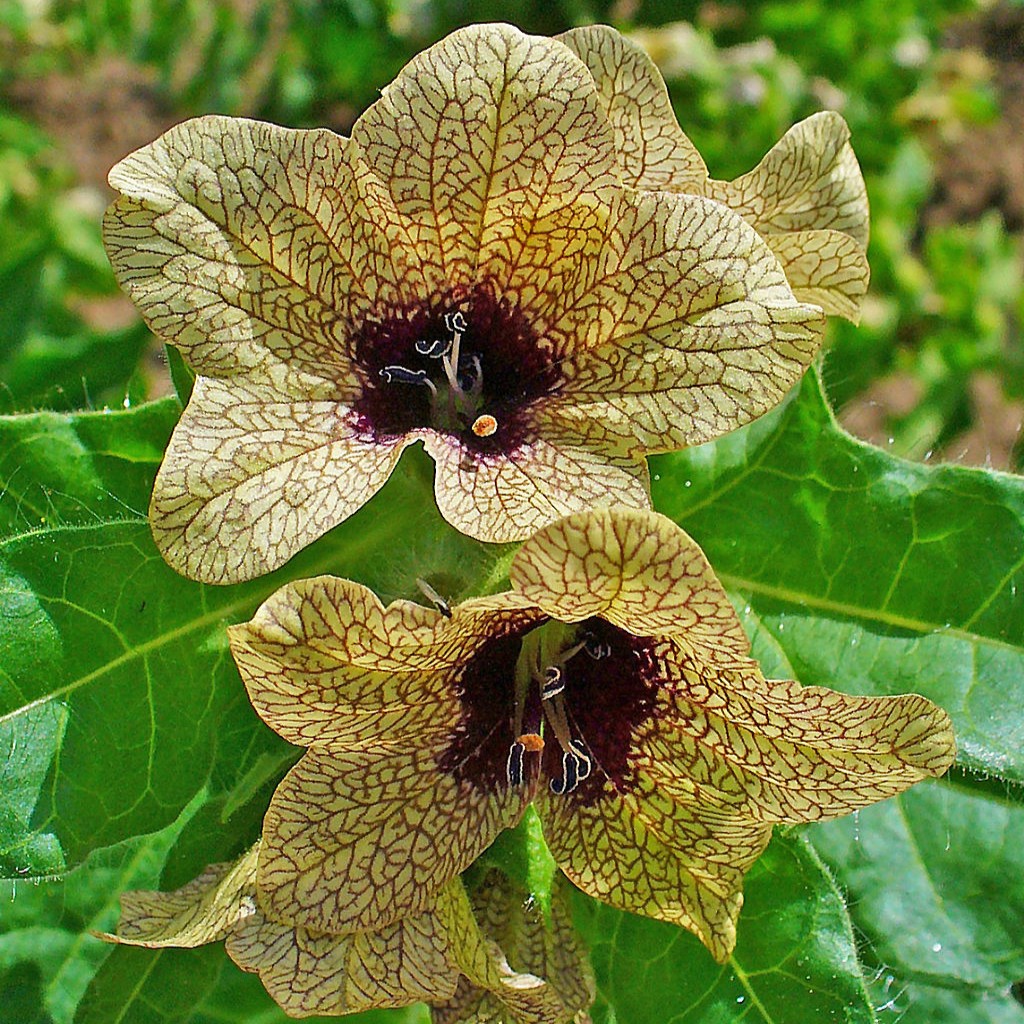Translated from french with claude.ai (please notify us of errors)
The Libyan tribes discovered it, the Greeks made it legendary, the Romans drove it to extinction. According to Pliny the Elder, it was “a precious gift of nature”[1]. Here, in three acts, is the story of an extraordinary plant that vanished 2,000 years ago, but which some modern-day “Indiana Joneses” still hope to rediscover…

The tale begins in the 7th century BCE, when Greek colonists from ancient Thera (the island of Santorini) led by one Battos settled in what is now Libya and founded the kingdom of Cyrene. They discovered that the local people were extremely fond of the aromatic sap of a plant that served perhaps as a seasoning, but chiefly as medicine. They called the plant silphion (σίλφιον), probably by adapting the local name into Greek.
Within a century or two, the small Greek kingdom of Cyrene built enormous wealth by exporting the precious sap, which sold for its weight in silver. In the Greek world, the phrase “Battos’s silphium,” found in the poet Aristophanes[2], became synonymous with “all the riches in the world.” A 6th-century BCE cup shows the weighing of sylphion. We see King Arcesilas II of Cyrene overseeing the operation: around a large set of scales, men deliver, weigh, package, and store the precious commodity.
Source of enormous wealth, the plant also appeared on Cyrenean coins. This is how we know roughly what it looked like: around a large grooved stem spread two or three tiers of opposite leaves; at the top, the flowers formed a spherical cluster[3]. Growing naturally in the Libyan sub-Saharan steppe, silphium could never be cultivated elsewhere, despite numerous attempts documented by the physician Hippocrates[4].
Greek and Roman authors[5] also tell us about how silphium was prepared and used. It was the sap that was collected, by cutting into the stems or roots. To preserve it, they made it coagulate and dry, sometimes mixing it with flour. The processed product came in the form of small blocks of resin, which could be stored and exported.

As for silphion‘s medicinal properties, these were supposedly extremely numerous and varied: treating sore throats and other ailments from cold, remedying nervous disorders, easing painful periods, reducing haemorrhoids and even curing baldness. “It would be an enormous task to list all the uses it serves in the mixtures where it’s included”[6], writes Pliny at the end of an already lengthy list. Good for everything, silphium perhaps also had a reputation as an aphrodisiac, though Pliny doesn’t mention this[7]. Even on animals, the plant seems to have had remarkable effects:
“If a beast happens to come across a young plant, you can tell by this sign: after eating it, sheep fall asleep straight away, goats start sneezing.”[8]
From the end of the 2nd century BCE, the former kingdom of Cyrene had become Roman. Its riches, botanical and otherwise, too. Silphium was translated as sirpe or silphium. The Romans also called the plant’s product lac serpitium, or sirpe milk, which gave the word laserpitium, soon shortened to laser.
The success of this “precious gift of nature” certainly hadn’t waned.
Pliny tells us that Julius Caesar had found in Rome’s public treasury, stored alongside gold and silver, a reserve of 1,500 pounds of silphium (roughly 500 kilos). Unable to be cultivated, impossible to grow elsewhere, victim of overexploitation combined with the destruction of its natural habitat and probably also local climate change[9], silphium was already, in Pliny’s time in the first century, nothing but a memory. The author explains:
“For several years now it has vanished from Cyrenaica, because the livestock farmers, finding it more profitable, let their flocks graze in the places where this plant grows. In our time only one plant has been found, which was sent to the Emperor Nero.”[10]
So it was the famously mad emperor who held in his hands one of the last specimens of the first plant to fall victim to human overexploitation…
Apart from being an extremely rare curiosity, the Roman world of the early common era therefore knew nothing of Cyrenaic silphium. Yet at the end of the first century, the cook Apicius mentions it in about twenty recipes, and under the name laser sixty more times… How can this be?

Obviously, the Romans, who were no slouches when it came to business, weren’t going to let such a market disappear. They found substitutes from related plants growing in other regions. It certainly wasn’t as good, but better than nothing. The main substitute came from Persia and Media, from plants that earned the charming name foetida – fetid, because of the rotten egg smell they gave off. The method was unchanged: extract the sap and dry it to preserve it, then use it grated in small quantities.
This preparation didn’t have much of a future in the West. But it became essential to traditional Indian cooking under the name asafoetida or hing[11]. So to cook ancient Roman food today, you need to shop at an Indian grocer.
The mystery of the original silphium remains unsolved, however, and researchers, more or less serious ones, regularly set off on the trail of the lost “herb.”
In September 2022, a Turkish researcher made headlines by claiming to have rediscovered the miracle plant on the slopes of a Cappadocian volcano[12]. The discovery seems rather poorly backed up scientifically at this stage, but the researcher was quick to test the chemical and culinary qualities of “his” plant. According to him, it has extraordinary properties. Rather anxiously, he admits: “If everyone starts making silphium sauce, we won’t have enough!”
In the unlikely event that the ancient plant has truly been identified, this second extinction could be even quicker than the first.
[1] Pliny the Elder, Natural History, 22, 49.
[2] Aristophanes, Plutus, 925.
[3] These characteristics allow us to determine that silphion belonged to the botanical family of Apiaceae (umbellifers).
[4] Hippocrates, Diseases, 4, 34.
[5] The main testimonies are those of Theophrastus (Historia plantarum, 6.3) and Pliny the Elder (Naturalis Historia, 19.3 and 22.49) who almost entirely reproduces the text of his predecessor.
[6] Pliny the Elder, Hist. Nat., 22, 49, 106 : quas habet utilitates admixtum aliis, inmensum est referre.
[7] Only the poet Catullus seems to allude to this property (Lesbia, 3, The Kisses).
[8] Pliny the Elder, Natural History, 19, 15: si quando incidit pecus in spem nascentis, hoc deprehenditur signo: ove, cum comederit, dormiente protinus, capra sternuente crebrius.
[9] In 2022, numerous media outlets reported an American study concerning the disappearance of silphium by changing the angle a bit. While researchers Paul Pollaro and Paul Robertson from the University of New Hampshire aimed to demonstrate that the plant had disappeared under the double impact of human demography and severe drought that had gradually settled in the sub-Saharan region, most media headlined about Caesar’s favorite plant that was supposedly the viagra of Antiquity…
[10] Pliny the Elder, Natural History, 19, 15: Multis iam annis in ea terra non invenitur, quoniam publicani, qui pascua conducunt, maius ita lucrum sentientes depopulantur pecorum pabulo. unus omnino caulis nostra memoria repertus Neroni principi missus est.
[11] Asafoetida article on Wikipedia.
[12] National Geographic, September 28, 2022, “Thought extinct for 2,000 years, this miracle plant could make a comeback.”
En savoir plus
- Amigues Suzanne. Le silphium – État de la question. In: Journal des savants, 2004, n°2. pp. 191-226.
- Charles Haas, Le silphium de Cyrénaïque, une plante médicinale aujourd’hui disparue, in Bulletin de l’Académie Nationale de Médecine, 2008, 192, no 1, 153-160, séance du 15 janvier 2008
Other articles in English from the Nunc est bibendum blog








